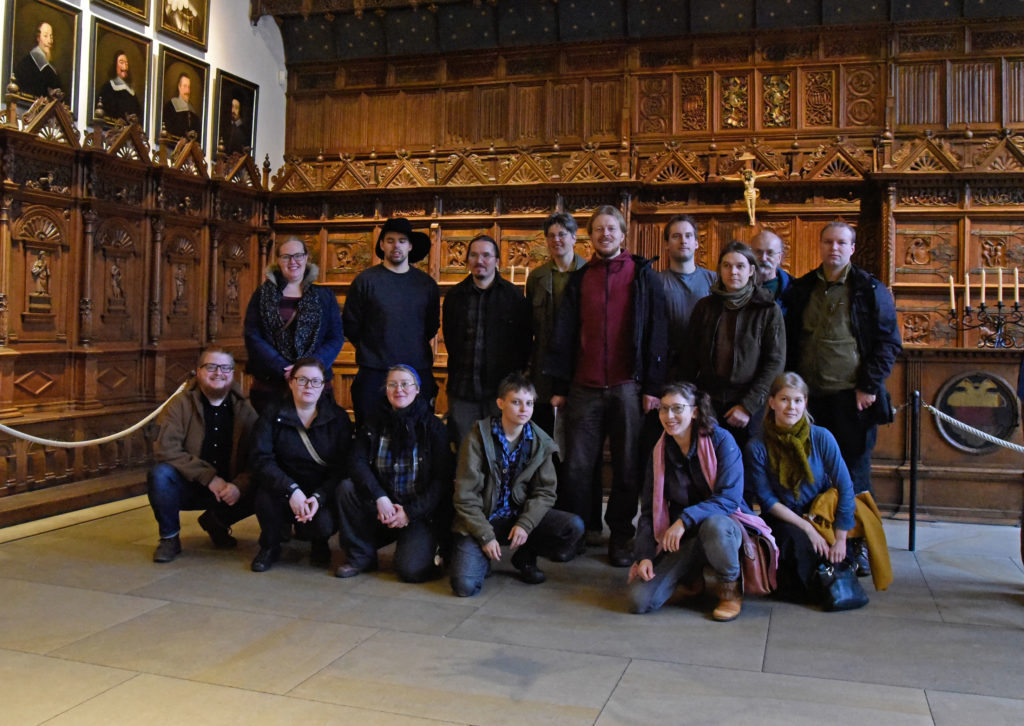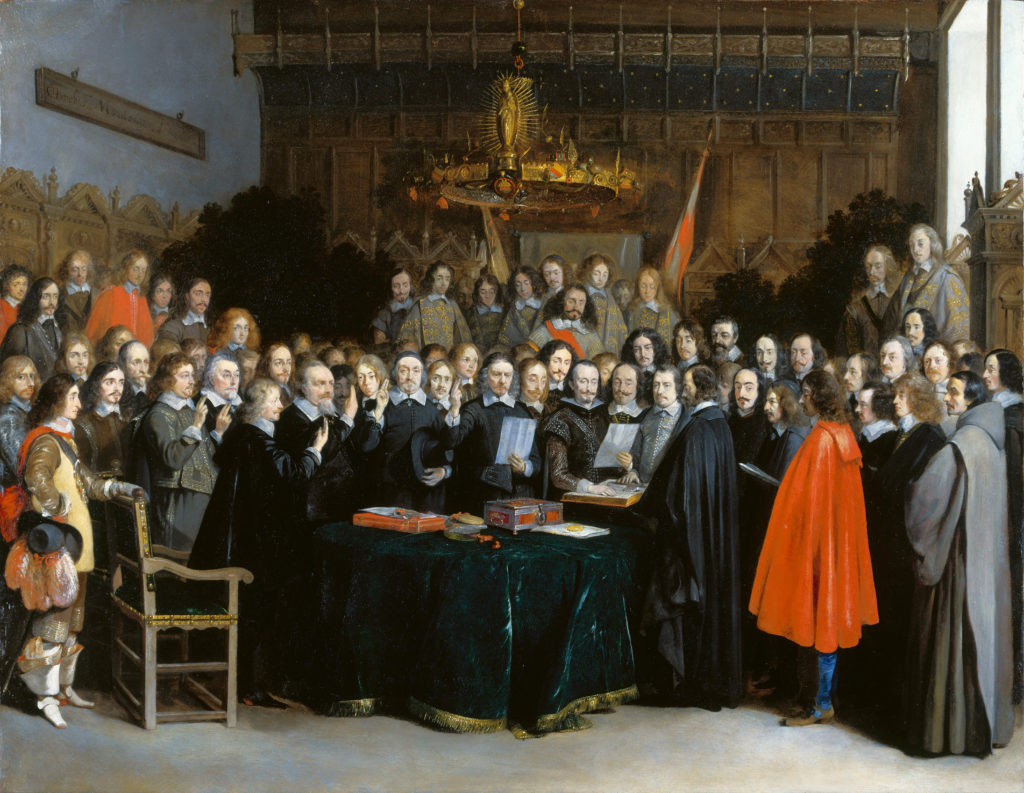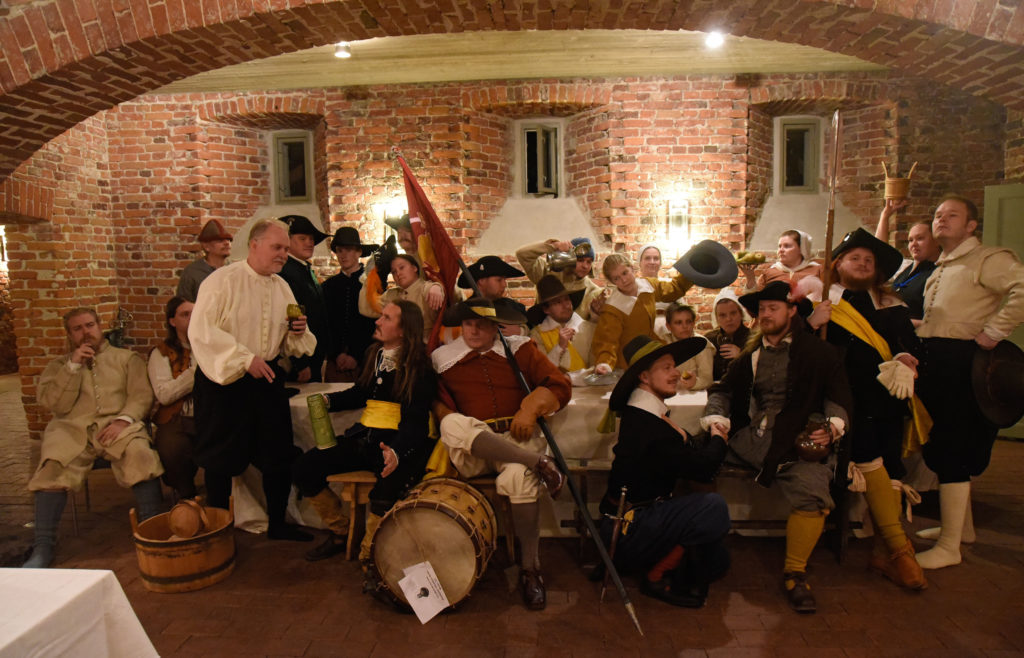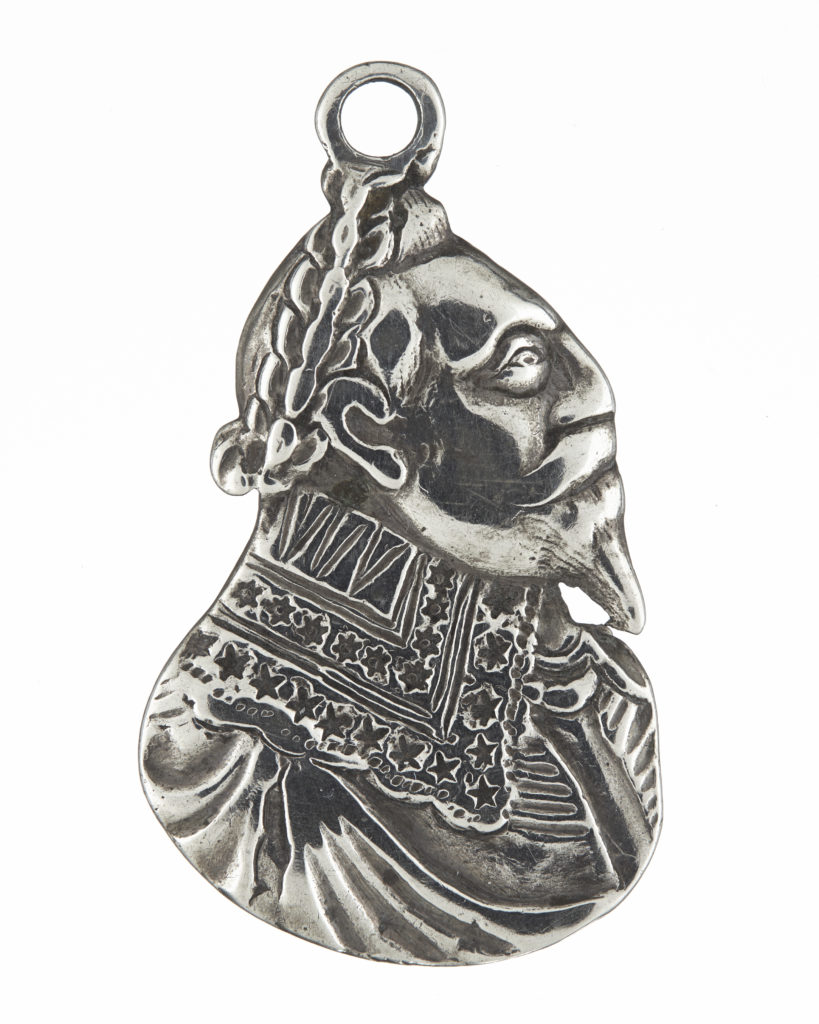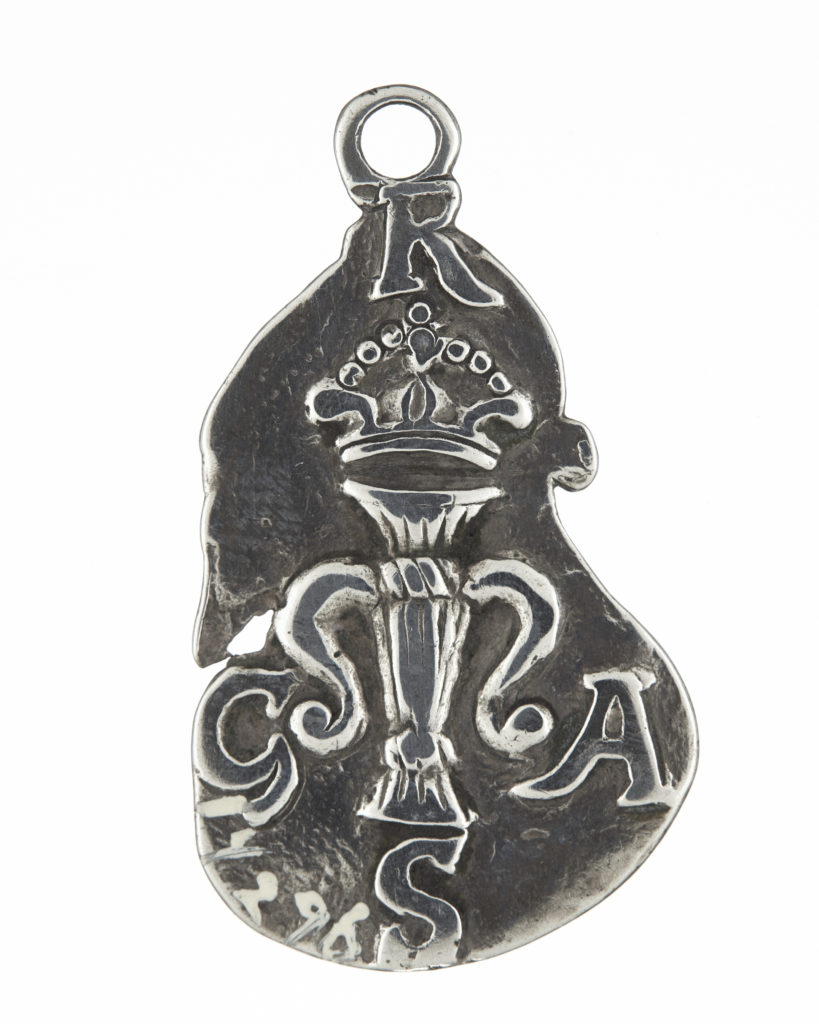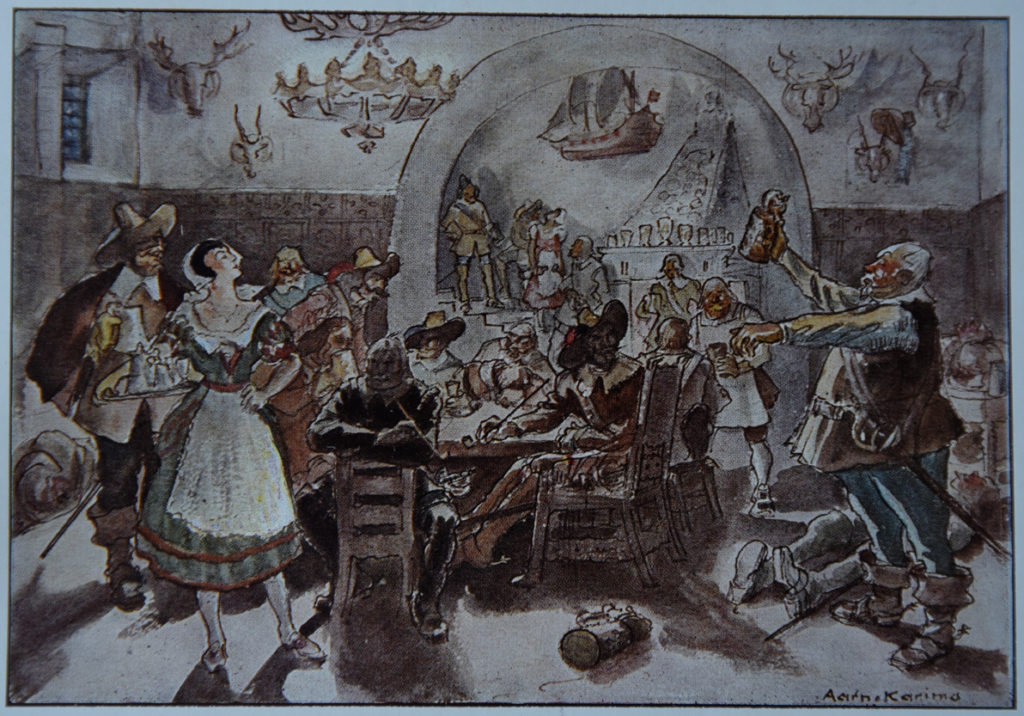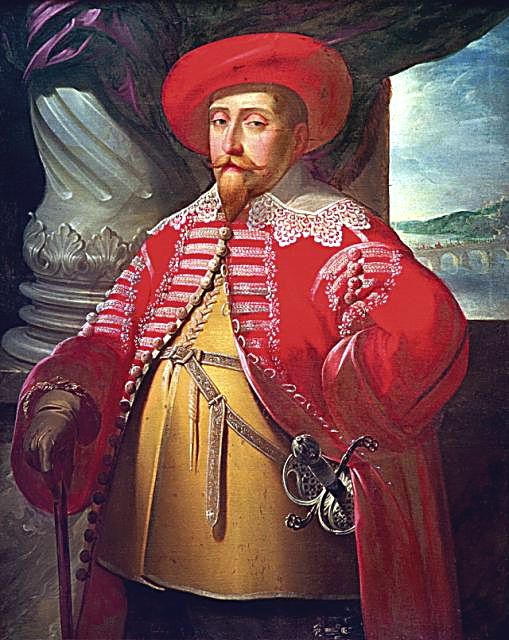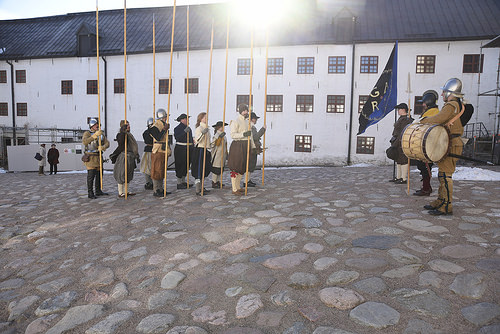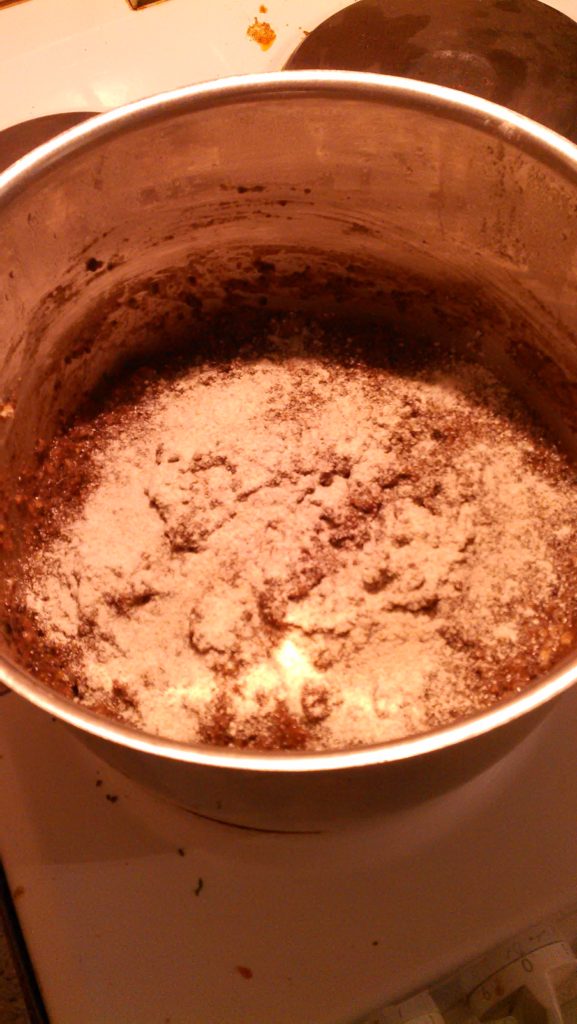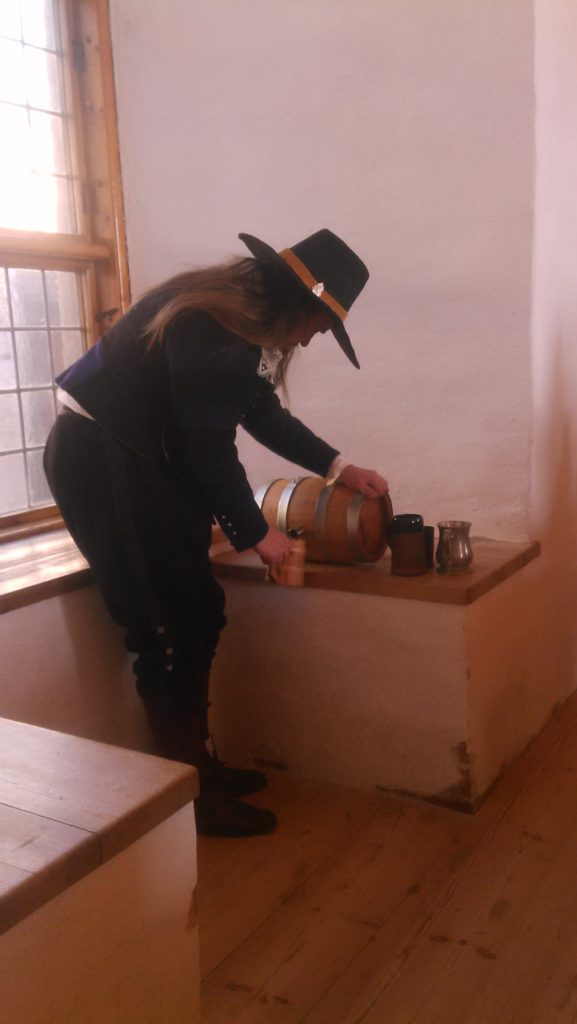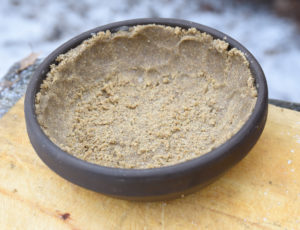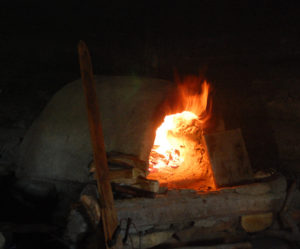GARS osallistui heinäkuun lopussa pohjoismaiden suurimpaan pehmomiekka- eli bofferitapahtumaan Sotahuutoon. Emoyhdistys Harmaasudet on ottanut osaa sodankäyntiin jo ensimmäisestä tapahtumasta lähtien, ja kun tämän vuoden tapahtuman teemaksi oli valikoitunut Nuijasota, päätimme osallistua yhteistyössä GARSin kanssa. Musketit vaihtuivat tussunuoliin ja piikit hopeapatukoihin, kun hollantilainen palkkasoturiryhmä Grolsche compagnie waardgelders lähti sotimaan Ruotsin aateliston riveissä!
In the end of this July, GARS participated in the largest padded weapons fighting event in the Nordic countries, Sotahuuto. Our mother organization Harmaasudet/Greywolves has participated since the first event in 2005, and when the Finnish rebellion Cudgel War (1596/1597) was chosen as the background story for the event, it attracted some people from GARS. So we changed our muskets to padded arrows, pikes to duct taped swords and started the fight as Dutch mercenary unit, Grolsche compagnie waardgelders.
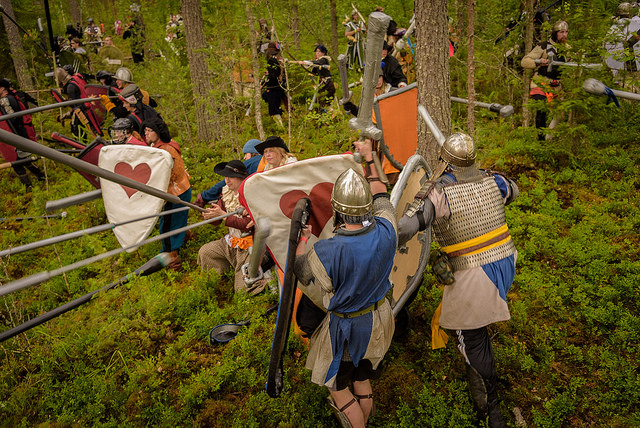
Photo by Jari Kuskelin
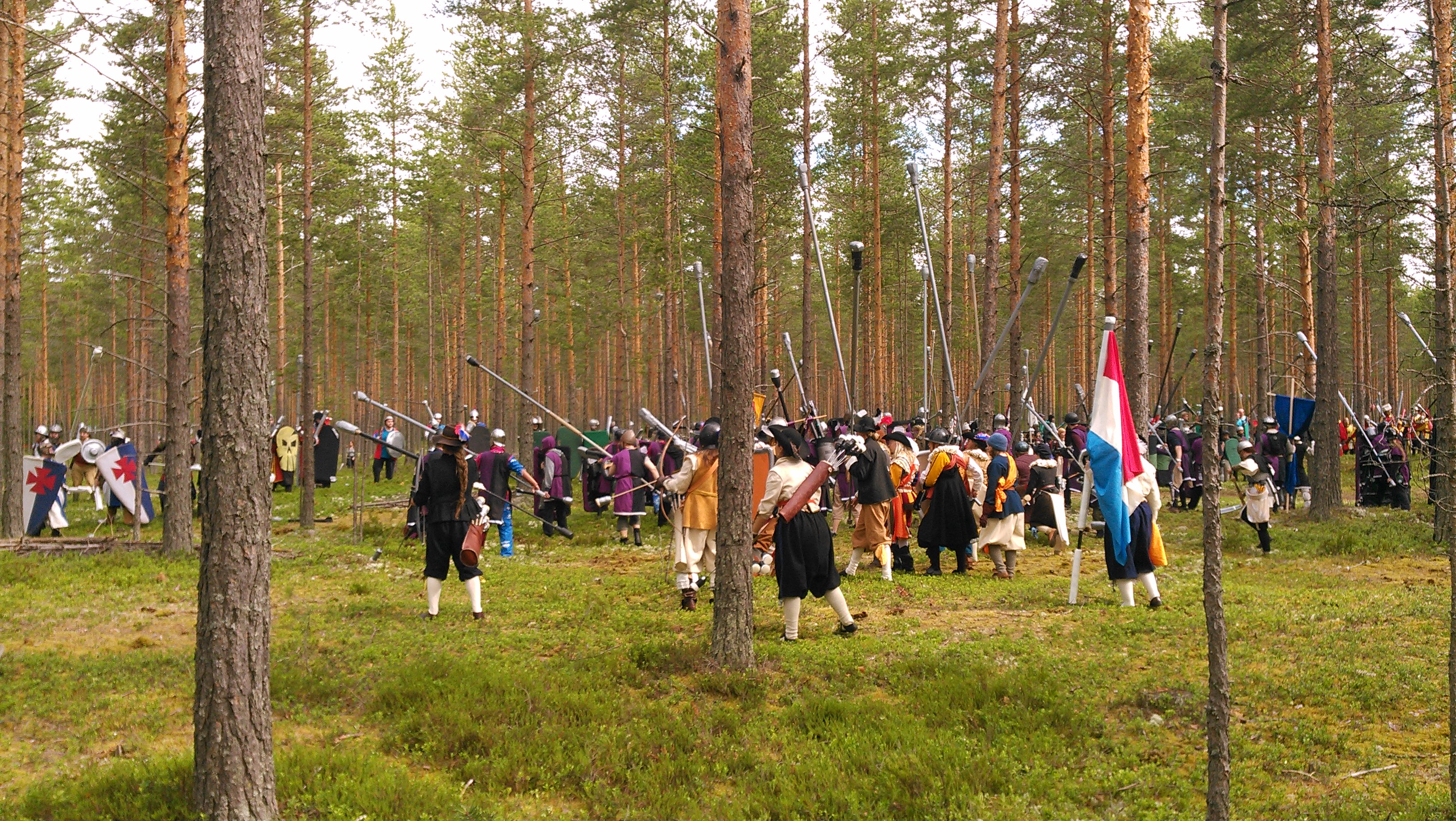
(c) GARS
Koska elävöitimme huippumuodikasta ulkomaalaista palkkasoturijoukkoa, halusimme näyttää sen myös vaatteissa, leirissä ja tietysti ruoassa. Leiripaikalla ei ollut mahdollisuutta tehdä avotulta, joten kokkaaminen oli hoidettava yhden kaasukeittimen avulla. Koska ruoanlaittomahdollisuudet olivat normaalia rajoittuneemmat, piti suurin osa ruuista tehdä etukäteen tai mahdollisimman vähän laittoa vaativina. Mikä olisi helposti kulkeva ja etukäteen valmistettava ruoka, joka ei välttämättä tarvitse kylmäsäilytystä? Piiraat!
Since we were depicting high-fashion foreigners, we decided to go all in with our clothing and camping, and especially food. We weren’t allowed to make fire in the area and were able to get only one gas stove with us, so food had to be prepared in advance or with some light preparation. What’s easy to carry, doesn’t need to be stored in cold and could be made beforehand? Pies!

Lisäksi oli leipää, juustoa, hedelmiä ja leikkeleitä / There was also bread, cheese, fruits and meat (c) GARS
Tarjolla oli kolmea erilaista piirasta: yksi perjantain iltapalaksi ja kaksi lauantain lounaaksi. Lisäksi söimme mm. savukalaa, makkaroita, grillikanaa, kasvispataa, mantelikeksejä, mansikoita ja lettuja. Kaikki perustuivat 1600-luvun lähteisiin.
There was three different pies: one for Friday evening and two for Saturday lunch. We also ate smoked fish, sausages, grilled chicken, vegetable stew, almond cookies, strawberries and pancakes. Everything was based on 17th century sources.

Photo by Jari Kuskelin
Yhtä piirasta varten tarvitset kaksi pakettia valmista piirakkataikinaa (pohja+kansi) tai saman verran voista ja jauhoista tehtyä perustaikinaa. Et tarvitse vuokaa, vaan taikina toimii itsessään säilytys- ja tarjoiluastiana. Ohjetta voi helposti muokata myös pasteijoiksi. (helppo peruspiirakkaohje täällä)
For one pie, you need enough ready-made or home-made pie pastry to make the top and bottom of the “coffin”. You don’t need any pie mold, since the pie is made whole and keeps the filling inside. You can also make pasties with this receipe. (basic ingredients for a pie pastry here)
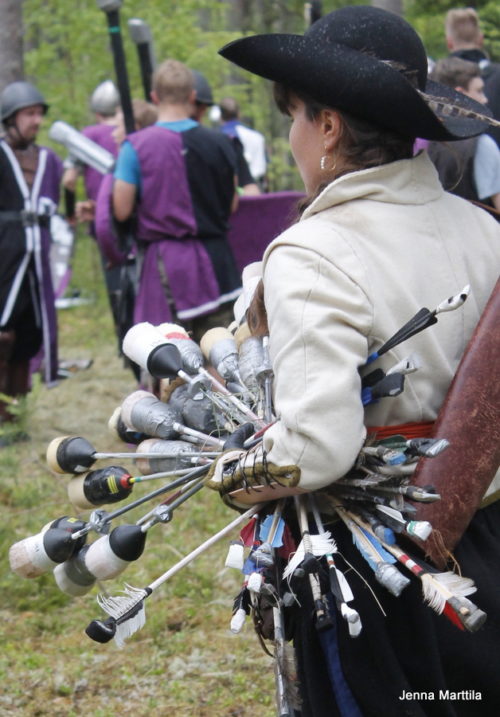
Photo by Jenna Marttila
Lihatäyte / Meat filling
(lähde/source: The Accomplish’d Lady’s Delight In Preserving, Physick, Beautifying, and Cookery, 1675)
400 g jauhelihaa (alkuperäinen ohje on lampaalle, mutta myös esim. naudanpaisti toimii) / minced meat (the original is for lamb, but other meats, like beef, works too)
1 hapan omena (ei alkuperäisessä, mutta esiintyy muissa lähteissä) / green apple (this is not in the original, but comes up in other period receipes)
1-2 dl rusinoita / raisins
Mausteet / Spices:
muskottia / nutmeg
neilikkaa / clover
valkoviinietikkaa / white wine vinegar
sokeria / sugar
suolaa / salt
Kuutioi omenat. Paista jauheliha kypsäksi, lisää loppuvaiheessa omenat niin, että ne vähän pehmenevät. Sekoita täytteeseen rusinat ja mausta makusi ja säätysi mukaan.
Cut the apple into cubes. Fry the minced meat until it’s cooked. When it’s almost done, add the apple cubes so they soften a bit. Mix with raisins and season according to your taste and wealthy.
Kasvistäyte / Vegetarian filling
(lähde/source: The Cooks Guide: Or, Rare Receipts for Cookery, 1654)
250 g tuoretta pinaattia / fresh spinach
250 g lehtikaalia (toimii lämmitettynä paremmin kuin alkuperäisen ohjeen salaatti, jonka tarkasta lajikkeesta en ole ihan varma) / kale (baked better than ‘lettuce’ from original receipe, which I have no idea what kind of plant it meant in the 17th century)
4 munaa (tekee piiraasta ruokaisamman) / eggs (makes the pie more filling)
Mausteet / Spices:
tuoretta meiramia / fresh marjorum
muskottia / nutmeg
sokeria / sugar
suolaa / salt
Paista pinaattia kuivalla pannulla ja matalalla lämmöllä niin, että se menee kasaan. Pilko lehtikaali. Yhdistä pinaatti ja lehtikaali sekä mausta makusi mukaan. Voit joko sekoittaa kananmunat täytteen joukkoon tai levittää täytteen piirakkapohjalle, jonka jälkeen teet täytteeseen koloja ja rikot kananmunat niihin. Joissain ohjeissa piirakkaan lisätään myös keitettyjä kananmunia, joko ehjinä tai paloina.
Fry the spinach on low heat until it collapses. Chop kale. Mix spinach with kale and season according to taste. You can mix the eggs to the filling, or if you want, you can spread the filling to the pie bottom, make small holes to the filling and pour the eggs there. In some receipes you can also put boiled eggs to the filling, either whole or chopped.
Päärynä-brietäyte / Brie and pear filling
(lähde/source: Eenen nyeuwen coock boeck, 1560)
200 g Briejuustoa / Brie cheese
2 päärynää / pears
2 munaa / eggs
sokeria / sugar
Keitä munat koviksi ja viipaloi ne. Viipaloi brie ja kuutioi päärynät. Levitä piirakkapohjalle kerroksittain päärynöitä, brietä ja munia, ripottele päälle makusi mukaan sokeria.
Hard boil the eggs and slice them. Slice Brie and dice the pears. Fill the pie bottom with layers of pear, cheese and eggs, and sprinkle sugar on top.
Kun haluamasi täyte on valmis / When the filling is done:
Levitä täyte kaulitulle taikinapohjalle. Kauli myös kansi ja peitä piiras. Käännä pohjataikina kannen päälle ja painele sauma tiiviiksi. Halutessasi voit koristella pinnan ylijääneestä taikinasta leikatuilla kuvioilla ja sivellä kananmunalla. Pistele haarukalla muutamia reikiä piiraaseen ja paista uunin keskitasossa 175 asteessa piirakan paksuudesta riippuen 30-45 min.
Spread the filling to the rolled out pastry bottom. Cover the pie with rolled pastry. Turn the edges of the bottom on top of the cover and secure the seam by pressing it with your fingertips. If you want, you can decorate the pie with left-over pastry or paint it with egg. Stick some holes to the pie and bake it in 175 C for 30 to 45 minutes, depending on the thickness of the pie.
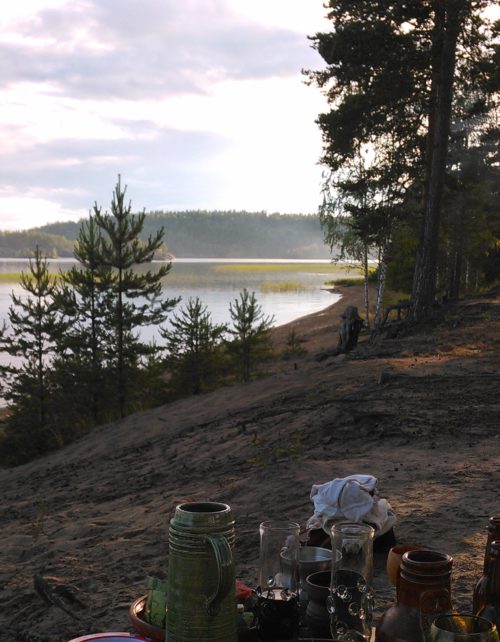
Nautitaan Saimaan rannalla auringon laskiessa / Enjoy by the beautiful lake Saimaa when the sun sets. (c) GARS
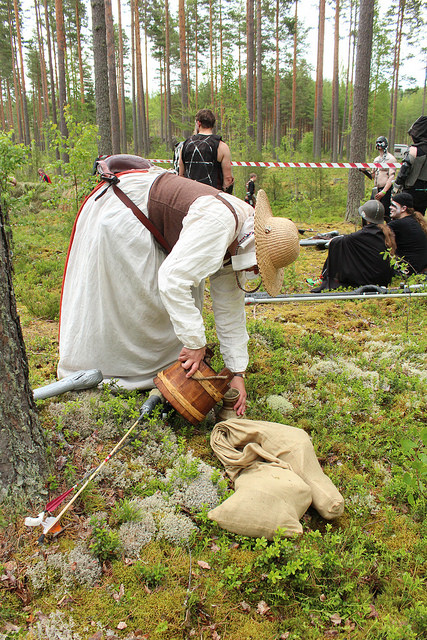
Huoltojoukot tulivat tarpeeseen / Service troups were much needed. Photo by Kristiina Tarkkala
Jenni
Tallenna
